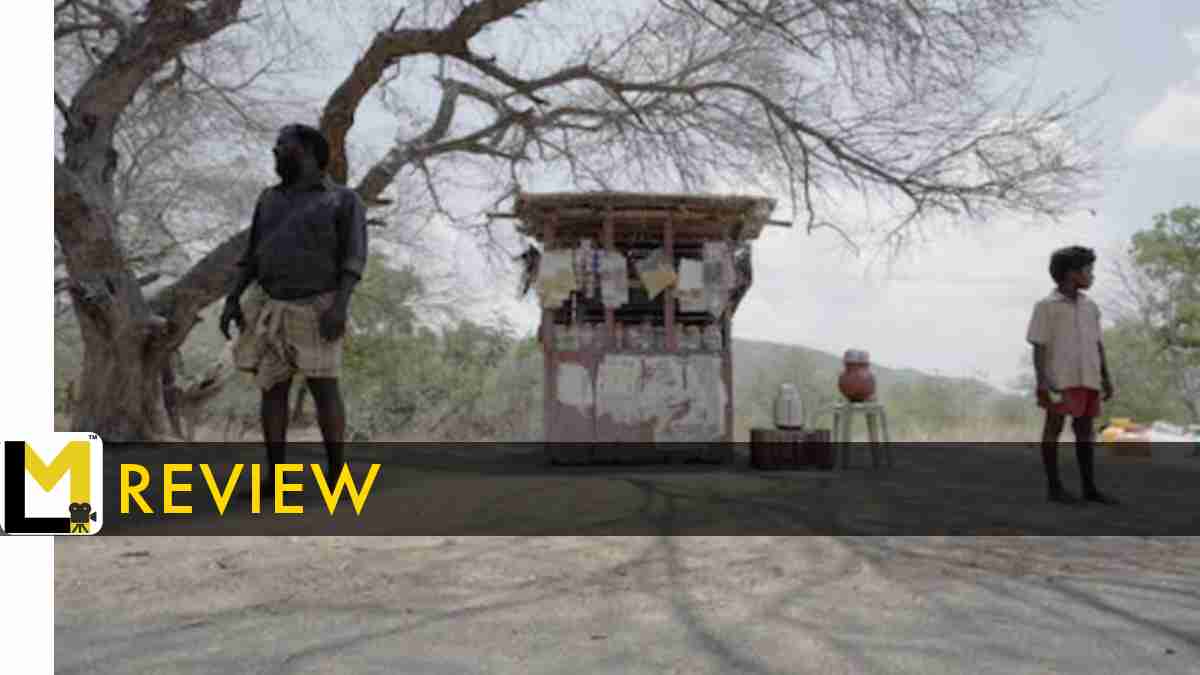The indie art films that actually worked have this nature of keeping us guessing till the very end, and once we join the dots of visual metaphors and dialogue cues as we finish the movie, it will give us that wow factor. One movie that gave me a similar experience was Sudevan’s Crime No. 89. Joining that limited list of mine is PS Vinothraj’s Koozhangal (Pebbles), which has finally been released through SonyLIV. If you are a fan of less verbal and more visual filmmaking, the craft of this movie will definitely inspire you.
The film is basically about a family that has a drunkard man (Ganapathy) as the family head. One day, when his wife leaves the house with her second child, he goes to pick up his son Velu from school, and they both go to the wife’s house to basically threaten her and bring her back. That round trip of the father and son, which involves a bus journey and a long walk, is what we see in Pebbles, aka Koozhangal.
SPOILERS AHEAD! The most cinematically appealing thing about this film as a cinephile for me was the least amount of spoon-feeding that was there in the writing. We approach the whole tale as a one-time thing. But the reason why the movie has a plural name has great significance, and Vinothraj exposes that only in the very last moment of the film. And once we get that and we backtrack the whole event in our heads, a newfound depth gets assigned to each and every subplot or visual aesthetic of the movie.
The visually driven writing of the movie is its greatness. In the initial areas of the film where the power is more towards this abusive husband, Vinothraj is using a lot of single shots. It sort of helps the maker to establish the unsympathetic environment in the wife’s support system as the scene shows us the thought process of the sister-in-law and the neighbors about the problematic relationship. The film gets more interesting when the father and son are forced to take the return journey on foot. Vinothraj offers a good space for us to interpret what might have happened in the family.
The drought-hit paled-out visuals work as a metaphor for the kind of relationship, and the pebbles also have that symbolic quality. There are symmetric visuals of the father and son looking in opposite directions at a couple of points in the film. I loved how Vinothraj used the pebbles to establish the recurring nature of the domestic abuse, and the inclusion of that woman and child in that bus fight sequence sort of silently shows the fact the story is not about a particular family. The entry of that puppy dog was a joyous, poetic justice kind of moment in this movie that was quite an emotionally draining experience. Through minimal dialogues and striking visuals, PS Vinothraj conveys his politics on the topic in a way that disturbs your headspace once you finish the movie.
The film mainly has only two faces. Karuththadaiyaan plays the role of the abusive father, Ganapathy, and Chellapandi plays the part of the son, Velu. From what I know, both of them are untrained actors, but I must say Vinothraj has managed to get the best performance from them. The movie’s duration is just 75 minutes (including 8 minutes of end credits). If you enjoy visual storytelling with subtext and metaphors over verbal detailing, this movie has enough in its runtime to give you that satisfaction as a cinephile.
If you enjoy visual storytelling with subtext and metaphors over verbal detailing, this movie has enough in its runtime to give you that satisfaction as a cinephile.
Green: Recommended Content
Orange: The In-Between Ones
Red: Not Recommended


